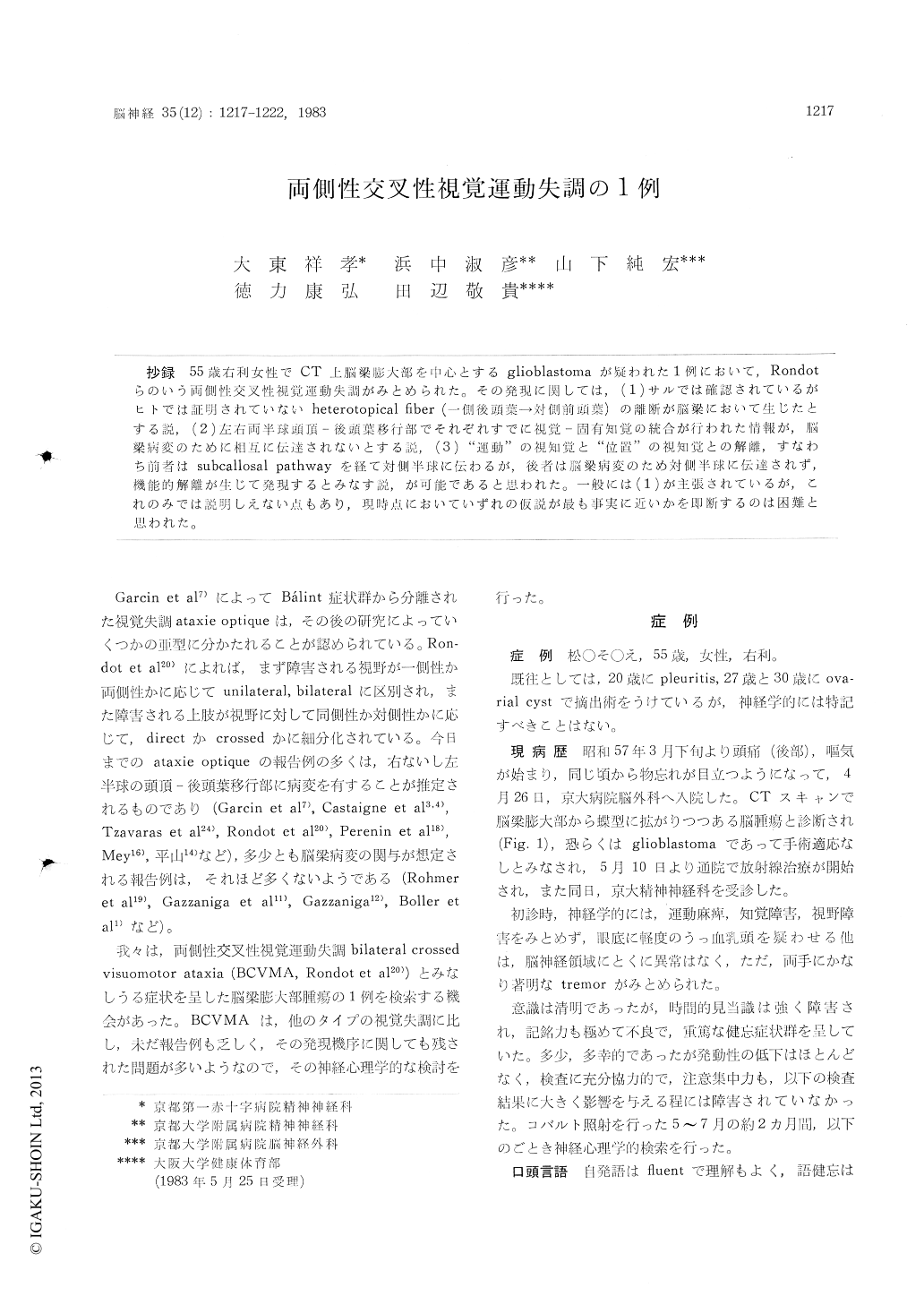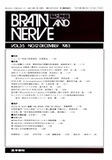Japanese
English
- 有料閲覧
- Abstract 文献概要
- 1ページ目 Look Inside
抄録 55歳右利女性でCT上脳梁膨大部を中心とするglioblastomaが疑われた1例において,Rondotらのいう両側性交叉性視覚運動失調がみとめられた。その発現に関しては,(1)サルでは確認されているがヒトでは証明されていないheterotopical fiber (一側後頭葉→対側前頭葉)の離断が脳梁において生じたとする説,(2)左右両半球頭頂—後頭葉移行部でそれぞれすでに視覚—固有知覚の統合が行われた情報が,脳梁病変のために相互に伝達されないとする説,(3)"運動"の視知覚と"位置"の視知覚との解離,すなわち前者はsubcallosal pathwayを経て対側半球に伝わるが,後者は脳梁病変のため対側半球に伝達されず,機能的解離が生じて発現するとみなす説,が可能であると思われた。一般には(1)が主張されているが,これのみでは説明しえない点もあり,現時点においていずれの仮説が最も事実に近いかを即断するのは困難と思われた。
We observed a 55 y.o. right-handed woman, who was suspected of splenium tumor (glioblast-Oma?) by CT scan and presented bilateral crossed visuomotor ataxia proposed by Rondot et al. Left unilateral apraxia and agraphia were not found, but left unilateral hemialexia was evident by ta-chistoscopic examinations. In regard to bilateral crossed visuomotor ataxia, we suggested that at least there might be three possible hypotheses about its realization mechanism. (1) Callosal lesion might disconnect heterotopical fibers which runs from one occipital lobe to another frontal lobe. (2) Integrated information of visual and proprio-ceptive inputs in the parieto-occipital regions could not be transffered mutually to other side of the brain. (3) Functional dissociation between visual perception of "moving" and that of "position" might be the cause of this symptom. Former could be transferred via subcallosal pathway, but latter not transferred due to the callosal lesion.
Hypothesis (1) could not explain, at least, "posi-tive aspects" of this symptom, and which hypo-thesis is most probable might not be decided at present, because anatomical evidence and patho-plastic mechanism are not yet clarified.

Copyright © 1983, Igaku-Shoin Ltd. All rights reserved.


